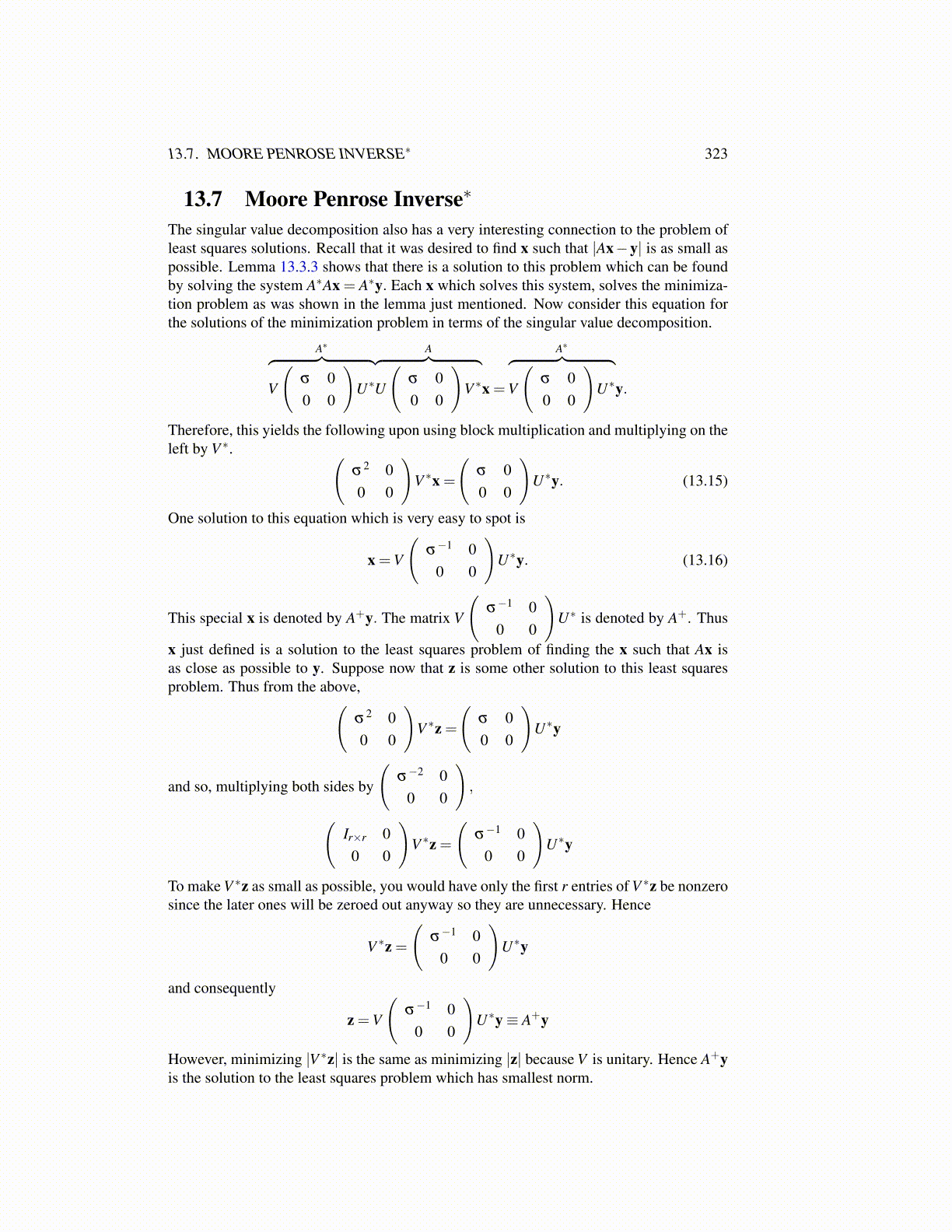
13.7. MOORE PENROSE INVERSE∗ 323
13.7 Moore Penrose Inverse∗
The singular value decomposition also has a very interesting connection to the problem ofleast squares solutions. Recall that it was desired to find x such that |Ax−y| is as small aspossible. Lemma 13.3.3 shows that there is a solution to this problem which can be foundby solving the system A∗Ax = A∗y. Each x which solves this system, solves the minimiza-tion problem as was shown in the lemma just mentioned. Now consider this equation forthe solutions of the minimization problem in terms of the singular value decomposition.
A∗︷ ︸︸ ︷V
(σ 00 0
)U∗
A︷ ︸︸ ︷U
(σ 00 0
)V ∗x =
A∗︷ ︸︸ ︷V
(σ 00 0
)U∗y.
Therefore, this yields the following upon using block multiplication and multiplying on theleft by V ∗. (
σ2 00 0
)V ∗x =
(σ 00 0
)U∗y. (13.15)
One solution to this equation which is very easy to spot is
x =V
(σ−1 0
0 0
)U∗y. (13.16)
This special x is denoted by A+y. The matrix V
(σ−1 0
0 0
)U∗ is denoted by A+. Thus
x just defined is a solution to the least squares problem of finding the x such that Ax isas close as possible to y. Suppose now that z is some other solution to this least squaresproblem. Thus from the above,(
σ2 00 0
)V ∗z =
(σ 00 0
)U∗y
and so, multiplying both sides by
(σ−2 0
0 0
),
(Ir×r 0
0 0
)V ∗z =
(σ−1 0
0 0
)U∗y
To make V ∗z as small as possible, you would have only the first r entries of V ∗z be nonzerosince the later ones will be zeroed out anyway so they are unnecessary. Hence
V ∗z =
(σ−1 0
0 0
)U∗y
and consequently
z =V
(σ−1 0
0 0
)U∗y≡ A+y
However, minimizing |V ∗z| is the same as minimizing |z| because V is unitary. Hence A+yis the solution to the least squares problem which has smallest norm.